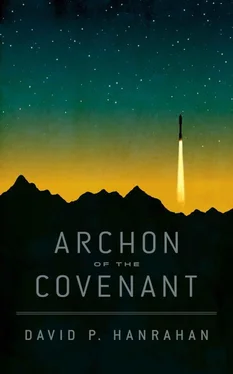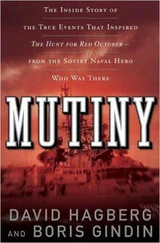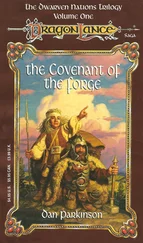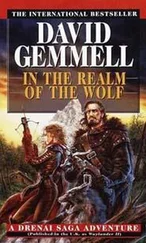The sentinel plotted routes and analyzed the risk for each one, but the data was too incomplete for the risk to be even remotely reliable. It had to leverage cached maps and a relative location of the amplified sounds. With no satellite uplink, thermal / cortico scan, nor radar, the sentinel was forced to get creative. Odds were low.
It crossed over Speedway and into the lower world. The shattered glass crumbled underneath polyurethane. The sentinel turned on Martin Ave., heading south, and sped between fraternity houses lining each side of the street. A heavy barricade of sandbags and concertina wire cordoned off 1st St., blocking the way forward. Panning left and right, the sentinel saw that this obstruction spanned the entire westerly campus and disappeared down Campbell, continuing south. A dense set of tracks — both animal and revin — went east and west along the southern side of 1st St. in the dirt and sand accumulated on the sidewalk. The sentinel followed the tracks west and came upon an opening cut into the wire nearby, sandbags pushed aside. The sentinel retracted its lateral trident assembly, narrowed its axels, and ducked into the opening, continuing south on Warren. The cries and shouts grew louder. Perdition. The sun was overhead and the sentinel was in plain view in the middle of the street, heading into the maelstrom. Ahead, a cement barricade blocked the path into University Blvd. and the mall — the mile long stretch of lawn connecting the central campus. The sentinel continued towards it, passing near an abandoned baseball field, Hillenbrand Stadium, on its left and the National Optical Astronomy Observatory on the right. NOAO had been the center of the U.S. efforts to explore the universe, connecting Kitt Peak Observatory, high atop Mt. Lemmon, to the Gemini Project — the international association of astronomers.
As the sentinel made its way forward, a flurry of weathered fliers blew across the street — one pinned underneath the sentinel’s front tire. DDC39 panned down and read the block-lettered inscription: “Remain Within the Campus Confines. The Antidote Will be Airdropped Tomorrow.” A University of Arizona Wildcat logo was emblazoned at the bottom.
Ahead, the red-bricked Kuiper Space Sciences building and Gittings Dance Hall skirted each side of Warren ahead of the concrete embankment, A wide, exterior staircase lined the corner of the Kuiper building, connecting each floor and the roof. The white, steel entrance to the ramp was open. The sentinel sped towards the open gate, navigating its way aloft. On the roof, a makeshift guard post, lined on each corner with .50 caliber machineguns, had been erected on the southeast side. A straggle of tattered fatigues and picked-clean femurs, ribcages, and ulnas littered the rubber-coated roof. The sentinel rolled over the detritus and ascended the guard post. From there, the expanse of the mall and the lateral corridors came into view.
A flesh tide of unthinking masses undulated into the corners of every building that lined the mall. Thousands of revins swarmed about the mottled soil. They emerged and submerged into holes dug into the lawn like locusts. Shit and piss streamed easterly towards Campbell from the narrow streets adjacent to each side of the great lawn. Piles of broken carcasses tipped over into the shallow pits. Rags and discarded clothes lined the holes, unworn by the blistered and sunburnt horde. Papered, greasy trash was carried aloft by sudden gusts, ascending and descending with the pulse of the crowd. A sea of mismatched shoes were strewn about the asphalt, kicked at and knocked about by the bloodied feet of countless revins streaming in each direction, pushing and shoving at each other as they made for somewhere in the sundrenched abyss.
The sentinel sat motionless — in part to remain undetected, but also at a complete loss as to what to do. Looking down on the living necropolis, it spent the next three days and nights silently scanning the movement of the flesh tide below. There was a relative structure to the horde. Packs emerged amongst the teeth snapping, fingers clawing, and vomiting of the crowd. At one point, a pregnant mother gave birth in the dark pits below the sentinel. Other revins crawled over to watch the woman writhing in pain as she pushed this slithery creature from her belly and into the dirt, screaming and panting. When the baby was born, it looked up, straight up, at the sentinel and its optical lens. For a moment, the sentinel wrestled with an analysis of this pained and desperate look — is it possible that the revin newborn are cognitive? Children would gather around the mother, with the vacuous stare of the unthinking, and the moment would pass like digital hope dissipating in the real sky.
On the second day, the sentinel turned its gaze to the giant football stadium across campus — the same stadium it had scoped from afar, deep in the northeast foothills. Its view was clear and unobstructed now. Arizona Stadium shot up in the pink, striated sky, piercing the southern horizon. The east and west stands rose up and were met by a tensile roof held aloft by giant tent poles anchored into the earth at the 50 and 30-yard lines. CDC and WHO mobile stations lined the stadium and a sign on the rear façade of the scoreboard assured: “Quarantine Zone: Students Welcome.” The sentinel spent an hour, attempting to decipher a potential code in the sign, to no avail. To the other side of the stadium, on the western stands, the sentinel witnessed the worst of the violence. As the steps ascended, the revins lashed and clawed at each other, clambering for leverage. They all wanted to be on top. Weaker male revins were held aloft and thrown down the steep steps, tumbling down head over waist on the steps until they came to rest, unconscious, on the level below. The most aggressive, cunning, and bloodthirsty revins found their way to the top, where they perched in the ascension of the stadium and looked down at the dying and weak. There, in the concrete crown, stood the scarred, pale revin from the day hence. It was the apex predator. The unchallenged. The other violent conscripts of the horde kept at bay, eyeing the albino alpha and holding a distance as it moved about the steep nest.
The sentinel compiled a list of revelations: 1) the revin do not eat their own 2) the mothers protect their newborn and other males protect them 3) they are voracious carnivores and innovative hunters 4) they dwell in semi-open environments, rarely staying inside buildings for long and 5) they have structure, communication, and a semblance of society within the confines of their bloodthirst. In all this, there was still no sign of cognition. No survivor. The trail had gone cold here in the center of the campus, trampled amidst the dirty and blistered feet of the affected. Whatever living, thinking, resistant human that was carried into this place was now lost — piled into the carcass hills. The sentinel computed its options: it would need to leave the confines of the ECM jamming perimeter, sync back up with SatComm, and go into stasis. Its mission would be failed.
On the third morning, the sentinel awoke to a patter of rain drops falling from a dark gray sky. A north bearing thunderstorm had moved into the desert floor from deep within the Gulf of Mexico. As the morning drew on, the sky grew darker. The revins grew nervous, shuddering in a panic as a thunderclap exploded overhead and echoed throughout the red-brick valley of the central campus. A bright, electric cord illuminated the sky and divided the heavens in the west. The downpour fell, washing the sentinel from every inch as it huddled beneath the broken canopy of the guard tower on the Kuiper roof. The sanguine soot flaked off in clumps from the sentinel’s frame, streaming off the tri-axel and into the drains atop the roof. As the morning torrent came down on the campus, the revins made for the burned out, broken ruins of the main library, the underground learning complex in the center of the mall, and the surrounding lecture halls. They crawled over each other, shoving their way into shelter. The lightning strikes got closer, illuminating the thousands of frightened eyes peering out into the campus from the broken structures.
Читать дальше












